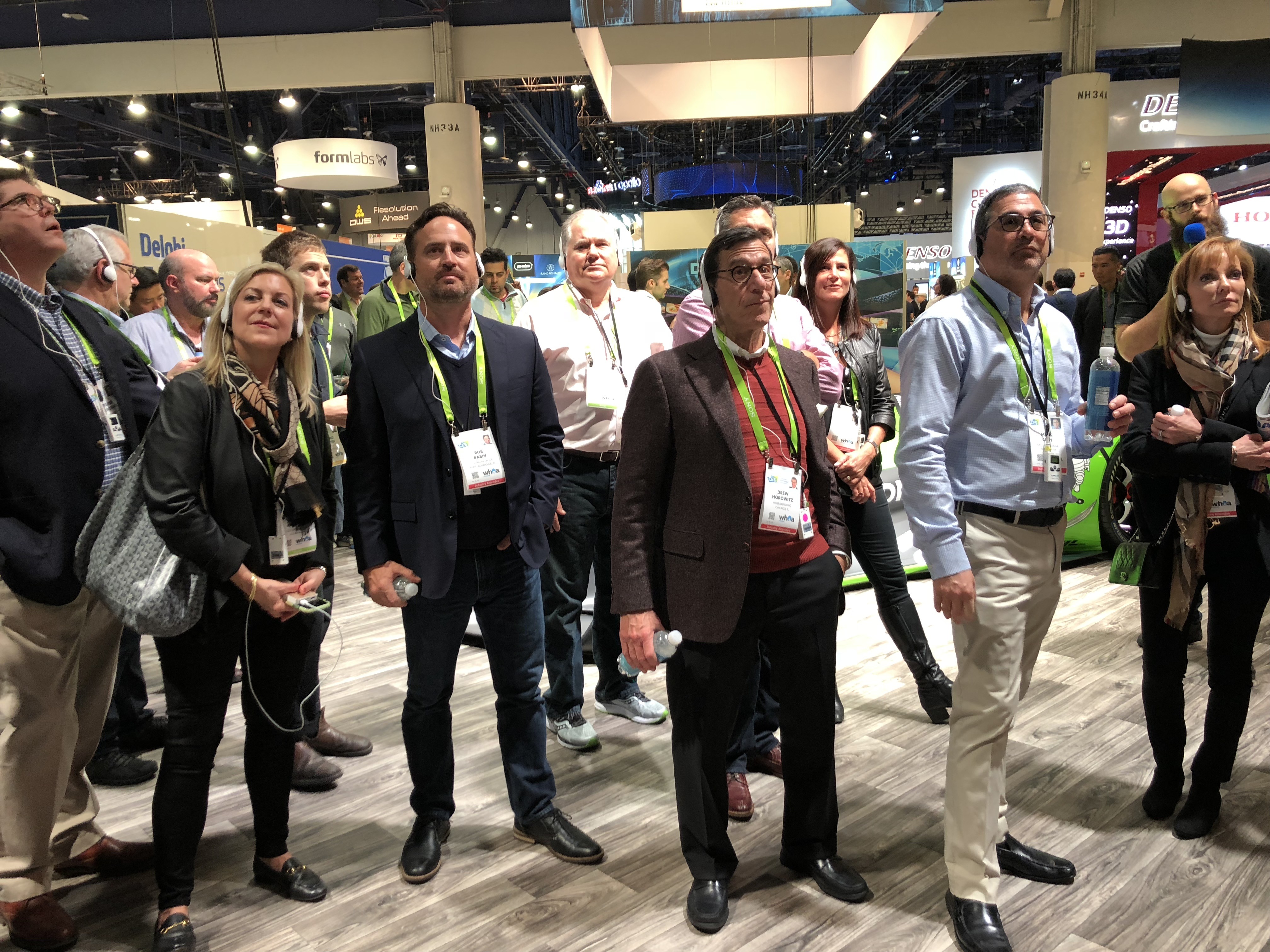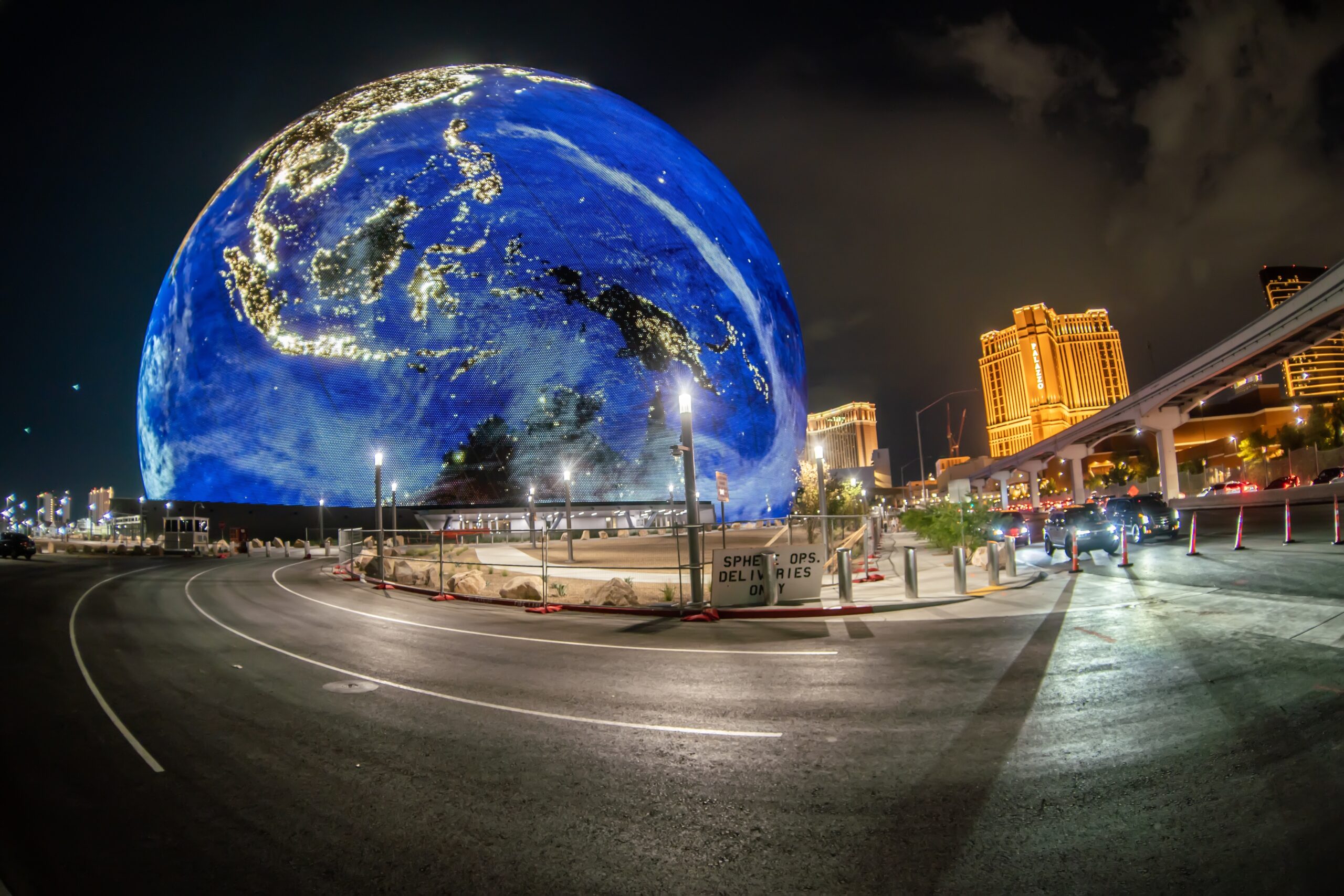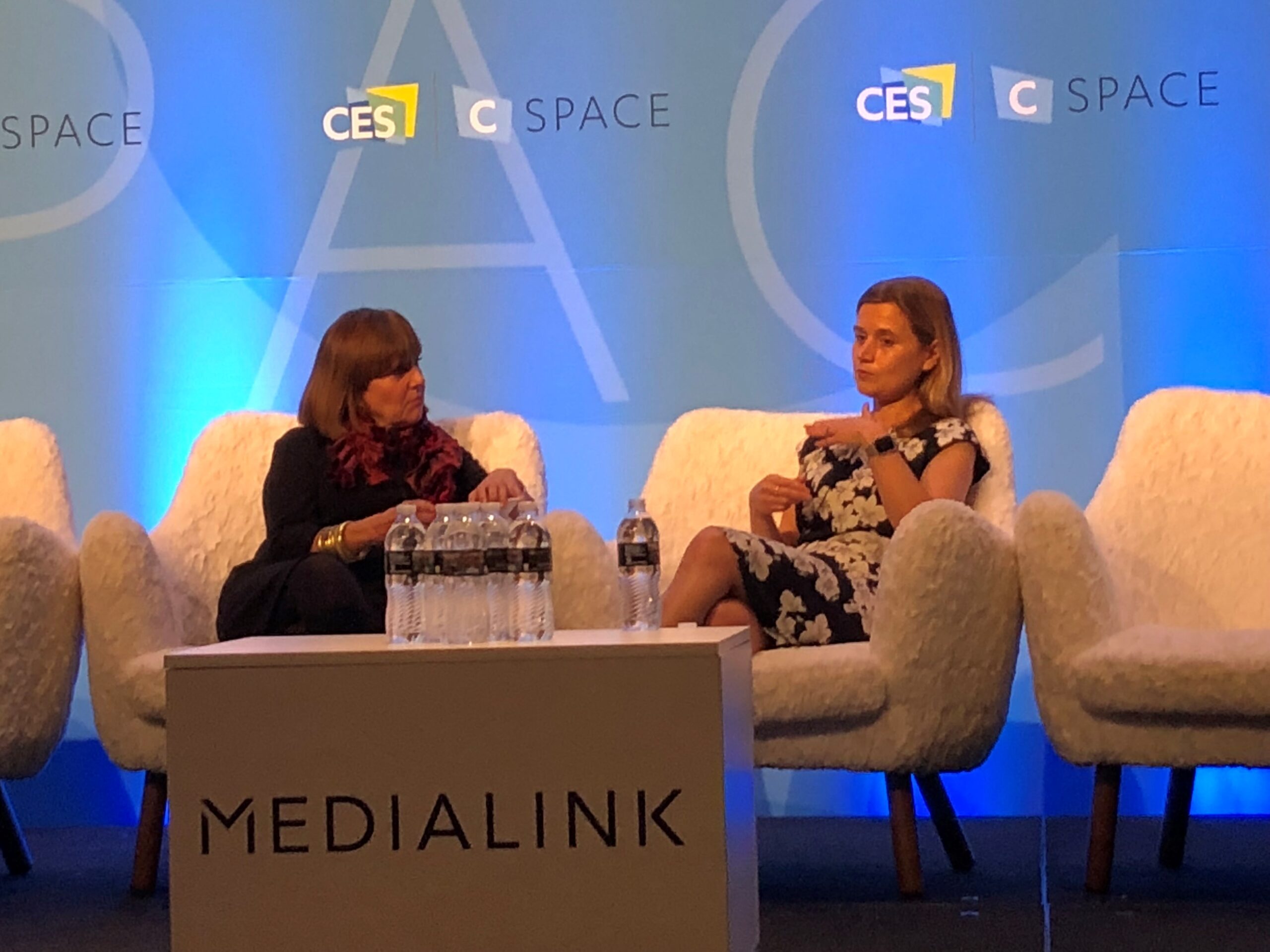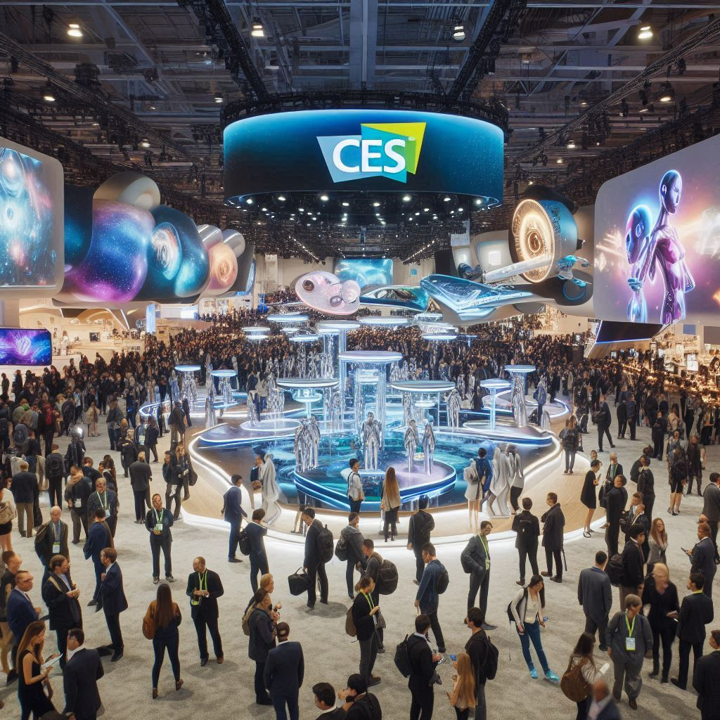
You could tell something was in the air this year – that things were going to be just a little different. In what seemed like an omen, there’s a new, refreshed logo for CES, the biggest tech trade show in the world.
CES has become an annual tradition for Jacobs Media – our trek to Las Vegas the first week of the new year. Since 2009, we’ve invested in what I lovingly call our “innovation education.” And it’s paid off. Our perfect attendance at CES (save for 2021 when the event was cancelled due to the pandemic) has given us the opportunity to peer around the corner…and get a glimpse of the future.
year. Since 2009, we’ve invested in what I lovingly call our “innovation education.” And it’s paid off. Our perfect attendance at CES (save for 2021 when the event was cancelled due to the pandemic) has given us the opportunity to peer around the corner…and get a glimpse of the future.
We’ve watched the breathtaking rise of the smartphone, the “screenification” of the connected car, the drag race between autonomous and electric vehicles, the battle of the “voices” creatively waged by Amazon and Google for smart speaker domination, and the weird and sometimes wonderous journey of that strange and faraway place known as the metaverse. We even toured Nvidia back in 2018, years before this hot company became part of your stock portfolio.
Along our journeys, we’ve met some fascinating and brilliant people who work in tech, automotive, and other disciplines. They have schooled us and helped us see the worlds of information and entertainment in a whole new light. And we’ve been able to explain the journey that radio broadcasters have experienced since the dawn of the Digital Age.
CES was the linchpin event that inspired us to make the “connected car” a crusade for radio. In 2013, we launched our first of three DASH Conferences in Detroit, partnered with Radio Ink. It was our CES connections that opened the driver and passenger doors to our understanding of the changing car dashboard and what it would mean to radio.
Conferences in Detroit, partnered with Radio Ink. It was our CES connections that opened the driver and passenger doors to our understanding of the changing car dashboard and what it would mean to radio.
But the real turning point came in 2017 when Cox Media Group head Bill Hendrich told me I had whetted his appetite for CES. But he wouldn’t think of attending this sprawling mass of technology without guidance. And that stimulated us to connect with the Consumer Technology Association – the organization that produces CES – to figure out how we might guide radio’s corporate leadership through the sprawling hallways of the Las Vegas Convention Center, as well as exhibit areas that included Eureka Park, C Space, and the many other conference and convention centers that make up the morass that is CES.
That first year, it was “CEO City” – among others, Caroline Beasley, David Field, Weezie Kramer, Jeff Warshaw, Beth Neuhoff, Drew Horowitz, Dave Bestler, Hendrich, and many other broadcast radio executives – most of whom had never attended CES. In successive years, we’ve hosted leaders from scores of companies and organizations, representing commercial, public, and Christian radio.
Horowitz, Dave Bestler, Hendrich, and many other broadcast radio executives – most of whom had never attended CES. In successive years, we’ve hosted leaders from scores of companies and organizations, representing commercial, public, and Christian radio.
We’ve learned a ton, had a sneak peak at the future, and we’ve enjoyed great times with many of our most important clients. In the meantime, we’ve watched radio broadcaster attendance at CES skyrocket.

In the first year or so, you could count them on two hands – Buzz Knight (who convinced us to go to CES in the first place), Holland Cooke, Perry Michael Simon (then with All Access), and of course “the King of CES,” Jerry Lee (pictured), who has personally attended more than 50 of these events over the decades. Another tradition is our annual breakfast with Jerry at CES at “Lucky’s,” the casual eatery across from Central Hall to compare notes and share glimpses of the future.
Today, hundreds of radio people regularly attend CES as evidenced by the renowned cocktail party we’ve been co-conspirators of, along with vCreative, Quu, Beasley, Radio Ink, Xperi, Benztown, and Skyview Networks. In recent years, it’s been a hot ticket, a great gathering where opinions and ideas are shared. Often the conversation is about the “Didya see….” attractions at CES, an opportunity to compare notes.
 Whether it’s the Vegas Loop (pictured) where a fleet of Teslas whisk attendees from one hall at the LVCC to the other or the “Google House” in the Central Plaza parking area, CES is feast for the eyes and the brain. It is difficult to explain to those of you who haven’t had the chance to experience CES, but there’s a palpable feeling of excitement that’s part of the air you breathe. Yes, the crowds are intense, the exhibits electrifying, and the discoveries often surprising. But the oxygen of CES is a powerful combination of optimism, innovation, and FOMO.
Whether it’s the Vegas Loop (pictured) where a fleet of Teslas whisk attendees from one hall at the LVCC to the other or the “Google House” in the Central Plaza parking area, CES is feast for the eyes and the brain. It is difficult to explain to those of you who haven’t had the chance to experience CES, but there’s a palpable feeling of excitement that’s part of the air you breathe. Yes, the crowds are intense, the exhibits electrifying, and the discoveries often surprising. But the oxygen of CES is a powerful combination of optimism, innovation, and FOMO.
Around every corner, it’s something you’ve been wanting to see or you’re surprised to experience. That serendipity – to happen across someone or something that’s amazing and unexpected is part of the thrill ride that is CES.
There is also no better way to start a new year with a fresh perspective. That’s a big reason why Paul and I would continue to attend CES, whether we’re sponsoring these tours or not.
 CES makes you more interesting – to your direct reports, your team, and your clients. If you’re a skilled storyteller, CES will supply you with compelling content guaranteed to make you the star of your conference room as well as parties and family get-togethers. This may sound superficial, but the fact is, great stories inspire and motivate others, especially when it concerns our careers and our personal missions. As someone who enjoys talking with others about what provides my spark, I wouldn’t know what to do in Q1 without my CES repertoire.
CES makes you more interesting – to your direct reports, your team, and your clients. If you’re a skilled storyteller, CES will supply you with compelling content guaranteed to make you the star of your conference room as well as parties and family get-togethers. This may sound superficial, but the fact is, great stories inspire and motivate others, especially when it concerns our careers and our personal missions. As someone who enjoys talking with others about what provides my spark, I wouldn’t know what to do in Q1 without my CES repertoire.
And while many of our guests are veterans of our tours, they know every year is going to be different. Last year, our evening excursion was a visit to Sphere (pictured). Paul and I work hard to ensure each year’s tour stands apart from past years. But our 2025 event promises to be especially unique because we’re inviting the 800-pound gorilla on this year’s journey.
visit to Sphere (pictured). Paul and I work hard to ensure each year’s tour stands apart from past years. But our 2025 event promises to be especially unique because we’re inviting the 800-pound gorilla on this year’s journey.
AI, of course.
Our charge to the team at CTA we work with to design each year’s itinerary is to find artificial intelligence that both amazes and inspires. No, not robot DJs or even the coffee barista, “Adam,” who wowed our guests last year. For this show, we’re on the hunt for AI that is imaginative, exciting, relevant, and stimulating. And I’m confident we’ll find it.
 We’re also putting together a “working lunch” adjoining C Space at the Aria. That’s where worldwide media and advertising companies and brands send their CEOs, CMOs, and other leaders to discuss how technology informs their strategy. These sessions are always exciting, well-attended, and quotable.
We’re also putting together a “working lunch” adjoining C Space at the Aria. That’s where worldwide media and advertising companies and brands send their CEOs, CMOs, and other leaders to discuss how technology informs their strategy. These sessions are always exciting, well-attended, and quotable.
Not surprisingly, the impact of AI on their mega brands will be a prime topic of the C Space conversation. We will curate those sessions to make sure they’re of prime interest to our radio broadcasters in tow.

And to make this year’s tour more collaborative and interactive, our “working lunch” will feature a guest speaker/facilitator who will lead a conversation among our attendees that we know will be memorable and actionable. The key to CES isn’t just seeing cool stuff – the latest and greatest gadgetry – it’s about learning and understanding the confluence of all this technological innovation and the impact it will have on our companies and on our industry. Thinking about AI and its impact on all aspects of the media business, we’re going to need all the counsel we can get.
So here we are, flying or limping into Q4 2024 and a tumultuous election that will determine a great deal about how our industry – and our world – will operate in the years ahead. You owe it to yourself – your continuing education – to shake it up in the new year. And there’s no better way to make that happen than to get your ticket punched for the Jacobs Tour to CES 2025. We’d love to have you join our tech adventure.
All the details are here. And if we can answer any additional questions, contact me or Paul.
- It’s The Christian (Radio) Thing To Do - June 3, 2025
- Is It Time For Radio to WAKE UP?! - June 1, 2025
- For Radio, The Perils Of Rebranding - May 30, 2025




A few months ago, I commented here that radio needs to play offense and not defense if radio is to progress alongside the rest of technology. Quick story: I have a 13-year-old daughter who is need of a new alarm clock (she prefers to be awakened by “Greg and Gina in the morning” (because her dad has been in radio for nearly 25 years). So, dad, goes to Walmart to buy a “clock radio”. There were 16 choices and only 3 of those choices had a radio band as a choice and of those 3 choices, 1 was FM only. All 3 choices were VERY low tech.
Does someone or should someone, lobby or advocate for adding a simple AM/FM band or app to as many new products as makes sense? I am not looking for us to go backwards to low tech solutions, I am looking for us to go forward in the sidecar of as many products as will have us.
And by the way, I didn’t buy any of the alarm clocks because I couldn’t support a product that doesn’t support me.
Desmond, your frustration is shared by many of us (more “seasoned”) veterans. I got my first AM/FM car radio in a 73 Toyota Corolla. The AM section sounded awful. FM was pretty good. Another purchase, a 74 Corolla had an AM only radio (by “Ten”) which sounded great. The obvious attempts to make FM sound better on the AM/FM receivers was glaring. That, in my opinion, was the beginning of the end for AM broadcasting. As for “radios”, there are a few on the shelves at the big box stores, most have reception capabilities of a doorknob. When AM stereo was tried out, you couldn’t get a demonstration because any store selling them had flourescent lights (and other RFI causing devices) blatantly in evidence. HD radio has the same problem in many cases, both AM and FM. Should Sony, Sanyo, Panasonic and others continue to market “radios”? It would seem that the impetus behind that practice is sorely lacking. Even my $500 “home theater” receiver has a really crummy radio section. Was a time you could buy a cornucopia of items with a radio inside. A toolbox. A toaster. Fisher-Price toys. Obviously not money makers today. Your wish -obviously is not a goal for broadcasters in 2024, sadly. If someone only found a way to make those items more desirable-and profitable. But-it would be tough to demonstrate them at CES in a large metal-framed convention hall.
Desmond, I feel your pain. We see this at CES every year, believe it or not. Companies like RCA still display “radios” and by and large, they are inferior products, nostalgically made to look like radios from a bygone era. Sad indeed.